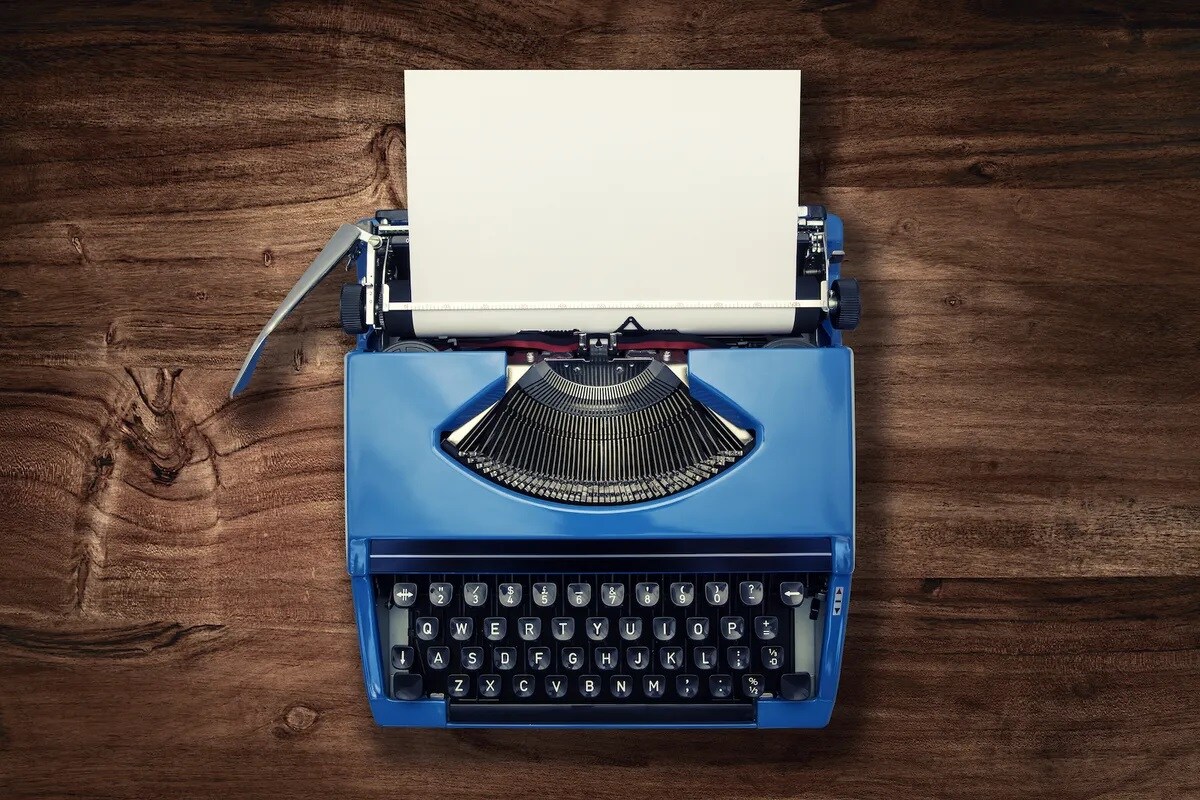
Title: 20 Typewriter Facts
The typewriter, a timeless symbol of communication and creativity, has left an indelible mark on the history of technology. From its invention in the 1860s to its enduring legacy in the digital age, the typewriter has undergone remarkable transformations and has influenced countless aspects of modern life.
In this article, we will delve into 20 fascinating facts about typewriters, shedding light on their evolution, impact, and cultural significance. Whether you're a seasoned typewriter enthusiast or simply curious about this iconic machine, these insights will provide a captivating journey through the annals of typewriter history.
So, let's embark on a captivating exploration of the typewriter's past, uncovering intriguing details that showcase its enduring relevance in a world shaped by innovation and progress. Join us as we unravel the captivating narrative of the typewriter, a device that continues to inspire and captivate minds across generations.
Key Takeaways:
- The typewriter, invented in 1868, revolutionized communication with its speed and efficiency, leaving a lasting impact on literature, cinema, and women’s rights.
- Despite the digital age, typewriters have made a comeback, captivating enthusiasts with their timeless charm and inspiring a thriving community of collectors and historians.
The typewriter was invented in 1868.
The typewriter, a revolutionary machine that transformed the way people communicate, was invented by Christopher Latham Sholes, Carlos Glidden, and Samuel W. Soulé in This invention marked a significant milestone in the history of writing and communication, as it enabled individuals to produce printed documents with greater speed and efficiency than ever before.
The QWERTY keyboard layout was designed to prevent jamming.
The QWERTY keyboard layout, which is still used in modern keyboards, was specifically designed to prevent the typewriter's mechanical arms from jamming. This layout strategically placed commonly used letters apart from each other, thus reducing the likelihood of jamming and allowing for smoother typing.
Mark Twain was the first author to submit a typewritten manuscript.
Renowned author Mark Twain made history by becoming the first writer to submit a typewritten manuscript for his book "Life on the Mississippi." This marked a significant shift in the way manuscripts were produced, setting a new standard for efficiency and legibility in the publishing industry.
Typewriters were originally marketed as a tool for the disabled.
In the early days of its introduction, typewriters were marketed as a valuable tool for individuals with disabilities, particularly those with visual impairments. The machine's ability to produce legible, uniform text made it a powerful instrument for enabling people with disabilities to engage in written communication and professional pursuits.
The IBM Selectric typewriter introduced the first typeball.
The IBM Selectric typewriter, introduced in 1961, revolutionized typing technology with the introduction of the typeball. This innovative spherical typing element replaced the traditional individual typebars, offering enhanced precision and speed in document production.
The typewriter industry reached its peak in the 1950s and 1960s.
During the 1950s and 1960s, the typewriter industry experienced its golden age, with a surge in demand for these machines across various sectors, including businesses, government offices, and personal use. This era marked the pinnacle of the typewriter's influence as a primary tool for written communication.
Typewriters were used in early computing.
Before the widespread adoption of computer keyboards, typewriters played a crucial role in early computing systems. They were used as input devices for early computer systems, laying the foundation for the keyboard interfaces that are integral to modern computing devices.
The stenotype machine is a specialized type of typewriter.
The stenotype machine, a specialized form of typewriter, is specifically designed for stenography, which is the process of writing in shorthand. This unique machine enables stenographers to capture spoken words in real time with remarkable speed and accuracy.
Typewriters were standard equipment in newsrooms.
For decades, typewriters were a staple in newsrooms around the world, serving as the primary tool for journalists and editors to craft news articles and reports. The distinct sound of typewriter keys striking paper became synonymous with the bustling energy of newsrooms.
The last manufacturer of typewriters ceased production in 2011.
In 2011, the iconic typewriter manufacturer, Godrej and Boyce, based in Mumbai, India, ceased production of manual typewriters, marking the end of an era for this once-ubiquitous machine.
Typewriters have gained a resurgence among enthusiasts.
Despite the digital age, typewriters have experienced a resurgence in popularity among enthusiasts, writers, and collectors who appreciate the tactile experience and nostalgic charm of these vintage machines.
The concept of the typewriter keyboard influenced modern computer keyboards.
The layout and design of the typewriter keyboard heavily influenced the development of modern computer keyboards, shaping the familiar QWERTY layout that remains prevalent in contemporary digital devices.
The Guinness World Record for fastest typing on a typewriter is 163 words per minute.
The record for the fastest typing speed on a manual typewriter stands at an impressive 163 words per minute, achieved by Stella Pajunas-Garnand in This remarkable feat showcases the exceptional speed and dexterity that skilled typists could achieve.
Typewriters were integral to the women’s rights movement.
Typewriters played a pivotal role in the women’s rights movement by providing women with a tool for expressing their thoughts, advocating for social change, and pursuing careers in journalism and administrative roles.
The distinctive font of typewritten text inspired digital typefaces.
The unique aesthetics of typewritten text, characterized by monospaced letters and a uniform, mechanical appearance, inspired the creation of digital typefaces that emulate the nostalgic charm of typewriters.
Typewriters have been featured in iconic literature and films.
Throughout literary and cinematic history, typewriters have been prominently featured in iconic works, symbolizing creativity, introspection, and the process of storytelling. From "The Shining" to "On the Road," typewriters have left an indelible mark on popular culture.
The typewriter has become a symbol of creativity and expression.
Beyond its practical function, the typewriter has evolved into a symbol of creativity, individuality, and personal expression, capturing the imagination of artists, writers, and enthusiasts who cherish its timeless allure.
Typewriters are sought after as collectible artifacts.
Vintage typewriters have become sought-after collectible artifacts, revered for their historical significance, mechanical craftsmanship, and enduring appeal as tangible pieces of nostalgia in the digital age.
Typewriters have inspired a thriving community of enthusiasts.
A vibrant community of typewriter enthusiasts has emerged, fostering a shared passion for these mechanical marvels through events, online forums, and the preservation of typewriter history and culture.
The legacy of the typewriter continues to captivate new generations.
Despite the digital revolution, the legacy of the typewriter endures, captivating new generations with its timeless charm, tangible craftsmanship, and enduring impact on the evolution of written communication and creative expression.
The typewriter, an iconic invention that revolutionized written communication, holds a rich and enduring legacy that continues to captivate enthusiasts, historians, and creatives alike. From its humble origins in the late 19th century to its cultural impact on literature, cinema, and the advancement of women's rights, the typewriter has left an indelible mark on human history. As a symbol of creativity and individuality, it transcends its mechanical function to embody a timeless allure that resonates across generations. Whether cherished as a collectible artifact or celebrated for its influence on modern keyboards and digital typefaces, the typewriter remains a testament to the ingenuity and innovation of its creators. As we navigate the digital age, the legacy of the typewriter serves as a reminder of the enduring power of human expression and the timeless appeal of analog craftsmanship in an increasingly digital world.
Conclusion
In conclusion, typewriters have left an indelible mark on the history of technology, shaping the way we communicate and work. These fascinating machines have evolved significantly over the years, from the early mechanical models to the sleek and advanced electric versions. Despite the rise of digital devices, typewriters continue to hold a special place in the hearts of collectors, enthusiasts, and those who appreciate the nostalgic charm of these iconic writing instruments. The enduring legacy of typewriters serves as a testament to their enduring appeal and enduring relevance in today's fast-paced world.
FAQs
What are the different types of typewriters?There are several types of typewriters, including manual, electric, and electronic models. Manual typewriters rely on mechanical power, while electric typewriters utilize electric power for enhanced typing speed and efficiency. Electronic typewriters feature advanced word processing capabilities and memory storage.
Are typewriters still used today?While typewriters are no longer widely used for day-to-day writing tasks, they continue to be cherished by collectors, writers, and enthusiasts who appreciate their vintage appeal and tactile typing experience. Additionally, some individuals and organizations still use typewriters for specific purposes, such as creating unique documents or maintaining a retro aesthetic.
Was this page helpful?
Our commitment to delivering trustworthy and engaging content is at the heart of what we do. Each fact on our site is contributed by real users like you, bringing a wealth of diverse insights and information. To ensure the highest standards of accuracy and reliability, our dedicated editors meticulously review each submission. This process guarantees that the facts we share are not only fascinating but also credible. Trust in our commitment to quality and authenticity as you explore and learn with us.


